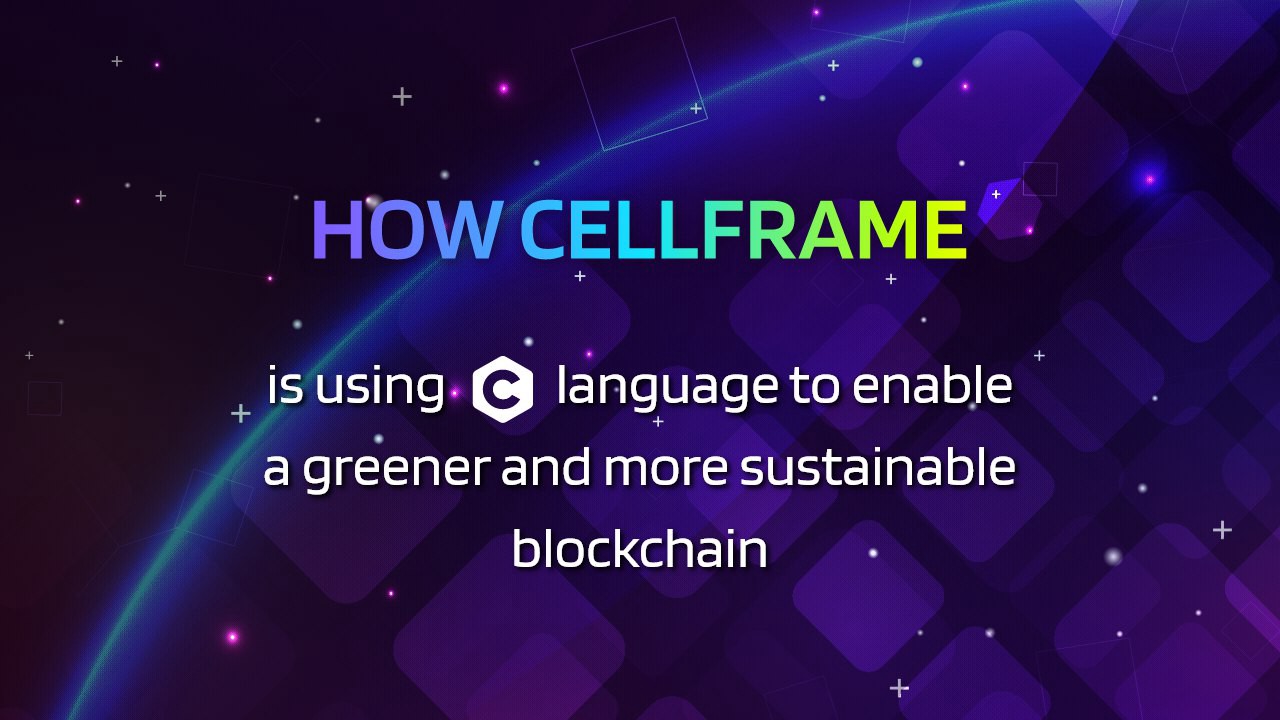How Cellframe is Using C Language to Enable a Greener and More Sustainable Blockchain
Category: About

Have you ever thought of a correlation between energy consumption and languages in a Blockchain network? Yes, there is a significant impact on energy consumption based on the blockchain network’s programming languages.
Energy-Efficient Programming Language
Back in 2017, a team of 6 Portugal researchers put a research paper titled “Energy Efficiency Across Programming Languages,” and what they found was interesting: there is a significant correlation between speed, energy consumption, and memory of various programming languages.
The outcome of the tests shows that C is the most efficient and advanced language for building an optimised protocol. That’s why have we used C as the programming language for Cellframe, while most layer one blockchain networks like Ethereum, Kadena and others use Solidity, Rust and other non-energy-efficient languages. We are going to discuss how Cellframe has developed a greener blockchain network.
C is the Greenest Programming Language.
C is a general-purpose programming language that comprises more than 4 million developers. C is a procedural oriented programming language, and its greatest strength is the ability to scale resource-intensive applications and make them run smoothly.
C language is used mainly for its efficient CPU management and memory control, relative ease of multithreading, option to deep or shallow copying data effectively, enhanced performance and portability across all existing operation systems and platforms, code isolation for different data structures, and more.
Cellframe is a service-oriented blockchain network with all these capabilities, and it is built very close to the hardware to provide efficiency on any machine — from supercomputers to smart fridges.
Cellframe: Greener and Energy-Efficient Layer One Protocol
The blockchain ecosystem is shifting towards a cleaner, greener future by adopting efficient proof of stake mechanisms. However, by understanding the basics of blockchain technology, it is essential to assess its massive and transformational implications for society, the economy, and the environment because proof of stake demands significantly lower hardware power requirements than proof of work, the energy needed only to facilitate secure transactions.
The crypto ecosystem is in the midst of a shift towards a cleaner, greener, more sustainable future that will significantly lower carbon emissions by adopting proof of work and efficient languages like C to develop the future proof architecture from the base like Cellframe network. As a future proof project, Cellframe is a more scalable, faster and more energy-efficient blockchain exploring PoS.
Cellframe uses proof of stake that doesn’t involve any mining power, thereby building an environment-neutral ecosystem. This framework allows to develop dApps without compromising on security and scalability.
Cellframe — C Code is a Procedural Language
Cellframe uses C language to create an energy-efficient protocol. C is a procedure-oriented programming language used in Bitcoin. C language is preferred due to its capabilities like multi-threading, function overloading, and runtime polymorphism. In addition, our developers use the C language for memory control capabilities.
In addition, it helps blockchain networks to handle parallel and non-parallel tasks quite effectively. Moreover, the C programming language is Faster and less power-intensive. Therefore, it is majorly considered for building dApps, Smart Contracts, and infrastructure in a Blockchain environment.
We do not use new CPU instructions. More precisely, the compiler uses them, not ourselves. The performance is simply due to the low-level nature of the language, and in particular the fact that it is a non-OOP language. Reducing the amount of nesting of function calls, makes it easier to optimize the compiler, as well as allowing more efficient use of the processor’s cache.
Cellframe algorithm aims to replicate a fair block generation process without spending valuable resources, computational power or electricity.C code is the fastest is fairly common knowledge among others.
Highly Secure, Trustless and Greener blockchain
Post-quantum encryption is a default function of Cellframe to effectively provide the highest security and efficiency. Cellframe is the only system that can protect a blockchain from terminal attack without user migration and implementation of a third-party code.
Blockchain technology is not the future; it is the present. Cellframe presents with a genuinely eco-friendly decentralised technology while not compromising on security, and This will attract more users and developers to build Dapps and Blockchain games Cellframe.
Recent news
